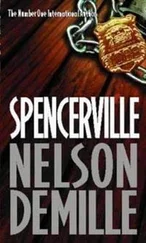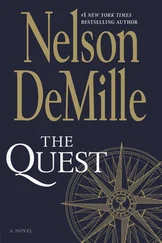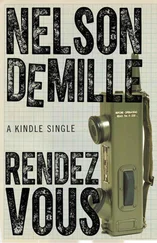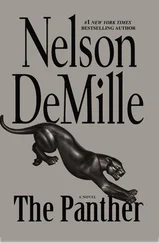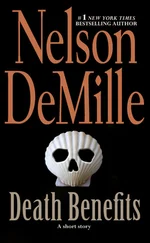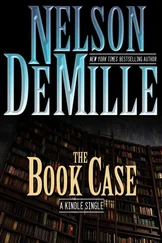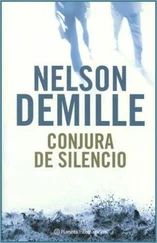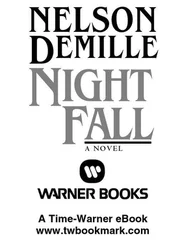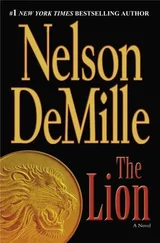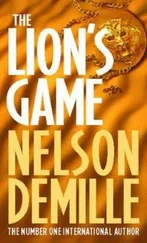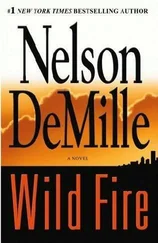Marital ignorance is bliss, but willful ignorance is just stupid. Detectives want to know things, but unfortunately I wasn’t having much luck today locating either my surveillance target or my wife. In fact, this was turning out to be one of those days where I couldn’t find my ass with both hands.
Tess asked me, “Who was that?”
“My wife.” I added, “She’s staying in D.C. tonight.”
“Good.” She said, “I should call Buck. To let him know where I am.”
“If you let him know where you are, you won’t be here much longer, and neither will I.”
Tess was catching on to the Corey way of doing things, and she nodded, then said, “If he wants to talk to me, he’ll call.”
“Correct.” Same with my wife.
I considered sending Kate a return text, or calling her hotel room, but I had more pressing issues than an AWOL wife. I’d settle this in the morning. If there was one.
Conte set a course that brought us closer to the south shore of Long Island where the fog had dissipated and the ocean was calmer. We were maintaining fifty knots and Conte said we’d be at the Verrazano Bridge in less than ninety minutes.
I stared out at the western horizon. I said to Conte, “If you see a flash of bright light—”
“We turn around and go home.”
“Correct.”
Within half an hour we were in the operational area of the Nassau County Police Marine Bureau, and I could see their units on the radar running search patterns. I spotted the navigation beacon on the Jones Beach tower about three miles away, then the lights of the city of Long Beach stretching along the coast.
We crossed an imaginary line and entered New York City’s borough of Queens, and in the distance across Jamaica Bay I could see aircraft taking off and landing at Kennedy Airport. I was surprised that Washington hadn’t halted inbound air traffic, as they had done on 9/11, but apparently the threat, in their minds, wasn’t as clear or imminent as it was in mine. There is always something lost in translation between the men and women in the field and those in the capital. In any case, I was glad that Kate wasn’t flying in tonight.
Ten minutes later we were off the coast of Brooklyn and I spotted Brighton Beach, where I’d thought this surveillance was going to end this morning. I saw the lights of Coney Island and the landmark twenty-five-story-high parachute tower, where I used to scare the crap out of myself as a kid. A few minutes later we turned northwest into Gravesend Bay, and there in front of us was the illuminated Verrazano Bridge spanning The Narrows between Brooklyn and Staten Island — the entrance to New York Harbor.
I could also see at least a dozen watercraft between us and the bridge, and Conte reduced his speed, then checked his radar screen and told us there were Coast Guard cutters and NYPD Harbor units all around us. Also, we could see and hear helicopters overhead.
It was obvious that there were enough boats at the entrance to the harbor to accomplish the mission, and we all knew that our SAFE boat was not going to add much to the effort. But we also understood that there were times when just showing up was enough.
Conte reduced his speed again and asked me, “You want to transfer to a unit here, or in the harbor?”
“The harbor.”
He looked at Andersson, then said, “Okay.”
We passed under the mile-long Verrazano Bridge and entered Upper New York Bay. We were now in the blast zone.
The fog was patchy in the bay and sat in clumps like gray islands. I didn’t see any other watercraft nearby, but helicopters circled overhead.
Conte further reduced his speed to ten knots and Andersson divided her attention between the radar and the radios, monitoring the marine and police channels.
I could make out the lighted skyline of Lower Manhattan, about three miles straight ahead. Well, I told Howard Fensterman I was on my way to Manhattan, and I kept my word.
To the west was the shoreline of New Jersey, miles of commercial shipping piers and warehouses. To the east was the Brooklyn waterfront, more miles of warehouses and marine terminals where cargo ships sat at their docks.
I looked around the bay at the far shorelines and the towering skyscrapers and the squat warehouses that made up the Port of New York. It took over three hundred years to build this. It would take about five seconds to destroy it.
Through a break in the fog off our port bow I caught a glimpse of the illuminated Statue of Liberty, standing tall in the harbor. And in the distance, where the Twin Towers once stood, I could see the Twin Beams — two vertical columns of searchlights that were lit every September 11 since 2002 as a memorial and remembrance of the September 11 attacks. Tess, too, noticed them, and so did Conte and Andersson, but no one commented.
Conte reduced his speed to five knots, then looked at his radar screen and said, “There are not many units operating in the harbor. What they’re doing is relying on the helicopters, and they’re using the available watercraft to play goal-line defense at The Narrows.”
“Right.” A good strategy if The Hana was still on the ocean. But if Petrov was already in the harbor, then he was already in the end zone, ready to spike the ball.
Conte asked me, “You want me to raise an NYPD unit?” I didn’t reply and he asked, “Or hail a Coast Guard vessel?”
“Why?”
“ Why? So you can transfer and I can get out of here.”
“I thought you wanted to stay.”
“Where did you get that idea?”
“You’ve come this far.”
Conte looked at Andersson, then said to her as though I wasn’t there, “Who is this guy?”
I informed them, “I don’t think I’m welcome aboard any other vessel.”
“Why not?”
“It’s a long story.”
“Well, then,” Conte suggested, “let me run you ashore while you’re telling me the story.”
Tess interjected, “Let me make some calls to get permission to board a Coast Guard vessel.”
I didn’t want to board a Coast Guard vessel, or any other vessel where I was persona non grata and would probably wind up in chains. I wanted to board The Hana , and I could do that only from this boat. I said to Conte and Andersson, “Let’s give it an hour here in the harbor. Then if we still haven’t located the target ship, Tess and I will transfer to another vessel.” I added, “One that’s sticking around.”
Conte got that I’d challenged his manhood: show balls or chicken out?
He looked at Andersson again, and she said, “I’m okay with waiting.”
Conte said to me, “I’ll go you one better, Detective. We’ll stay here until you tell me you want to leave.”
Well, boys will be boys — especially in front of girls. And the girls, too, seemed okay with looking death in the eye. I said, “You got a deal.”
I looked at my watch. It was 2:35 A.M.
The good news was that if the nuke blew before 8:46 A.M., we wouldn’t feel a thing. And I wouldn’t have to go to 26 Federal Plaza to get fired.
We took up a position about half a mile southeast of Battery Park off the tip of Manhattan Island. About a half mile south of us was Governors Island, separated from Brooklyn by Buttermilk Channel. Farther up the East River I could see the Brooklyn Bridge and the Downtown Heliport where a chopper was taking off, and also Pier 11 where The Hana had docked Saturday morning before sailing out on its fateful Sunday cruise.
If this was a football game, we would be playing safety near the goal line. Unfortunately, the nuclear football didn’t need to get into the end zone to score a touchdown.
A half hour passed, mostly in silence except for radio traffic, which was minimal because of the Russians’ listening post at their residence in the Bronx. Most communication was being done by text, or e-mails on laptop computers, and occasionally by a direct cell phone call to an individual, though even that commo was not secure. My guess, however, was that Petrov’s mission was so secret that no one at the Russian listening post even knew about it, so they weren’t monitoring for a problem, nor was anyone at the Mission or the ’plex in communication with Petrov. Vasily was on his own, and I wondered if the assholes in Moscow who planned this could stop him.
Читать дальше

